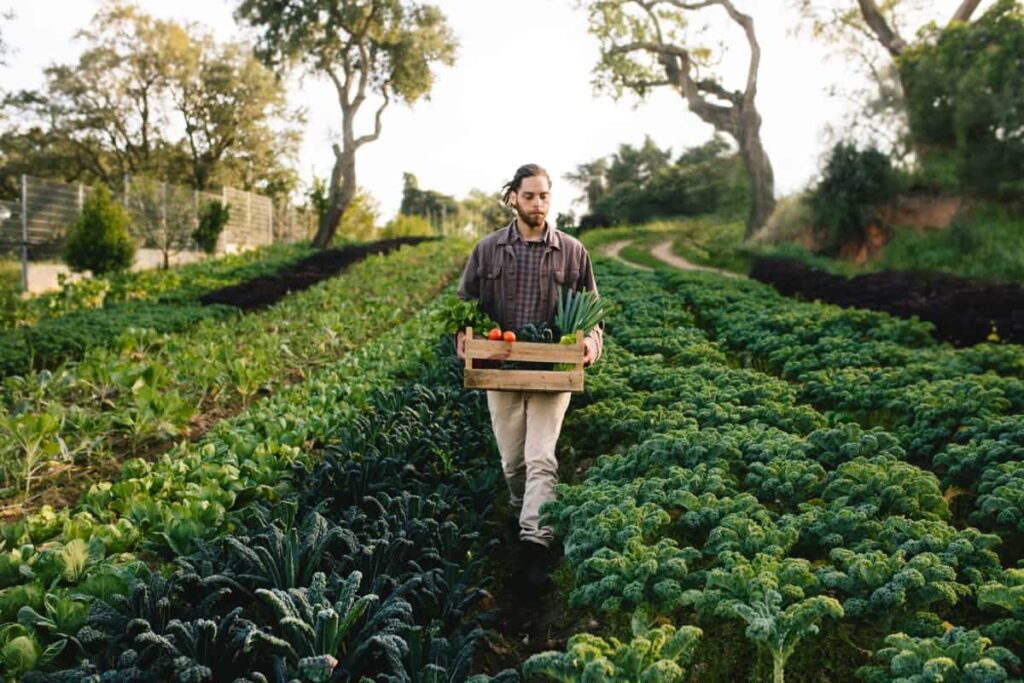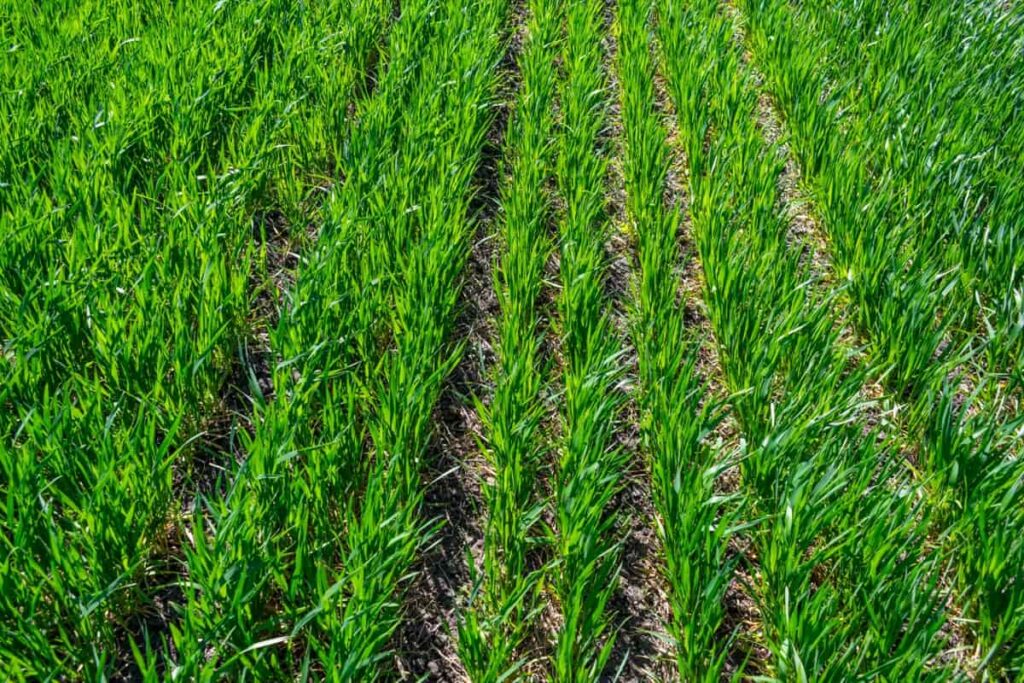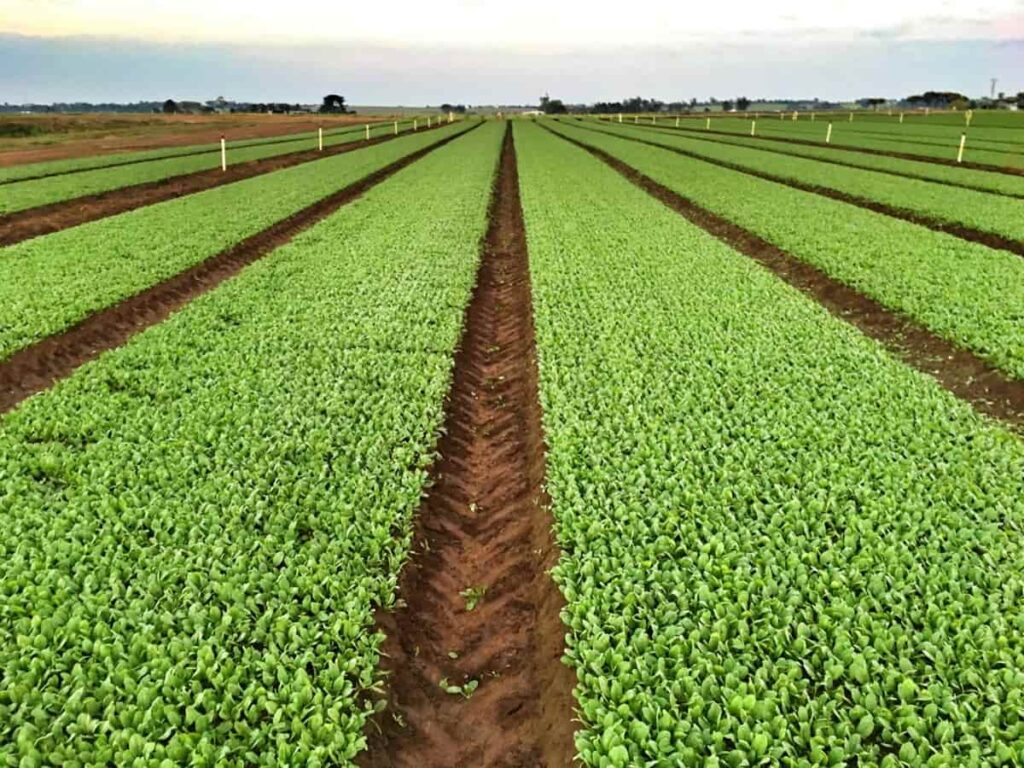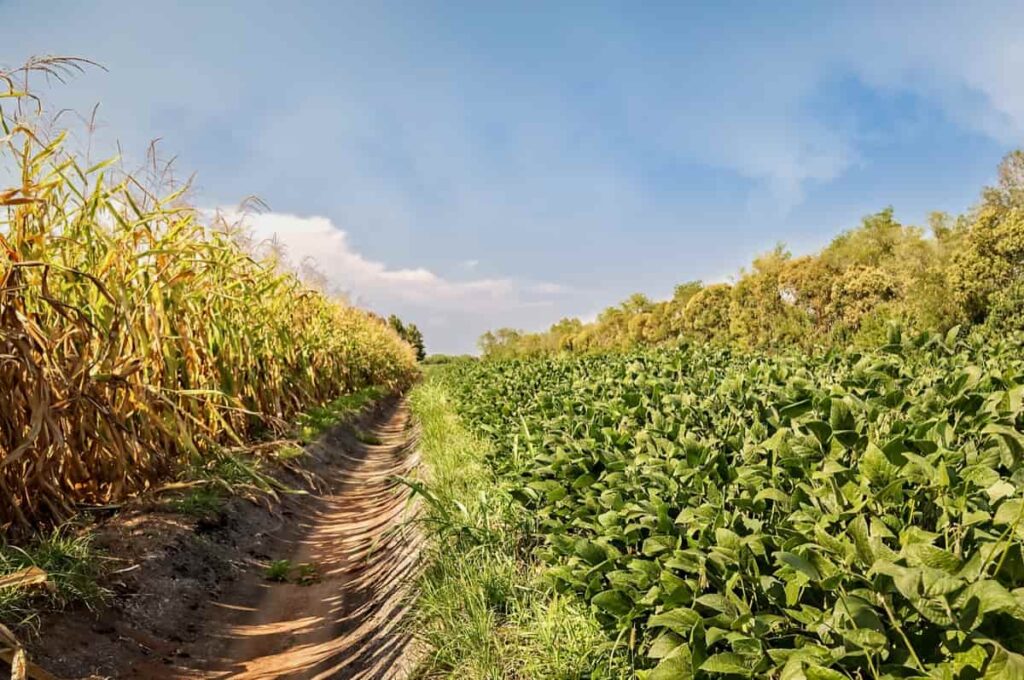Regenerative farming is a sustainable approach to agriculture that focuses on improving soil health, biodiversity, and ecological resilience. In contrast to traditional industrial agriculture practices, regenerative farming prioritizes a holistic approach to farming that seeks to restore natural ecosystems and protect the environment. By incorporating cover cropping, crop rotation, and reduced tillage, regenerative farming can reduce greenhouse gas emissions, increase biodiversity, and promote soil health.

Regenerative farming has the potential to not only lessen the bad effects of industrial agriculture but also make farms more profitable and help farming communities become more stable. Crafting a regenerative farming business plan is essential to building a sustainable, profitable, and resilient farming business for the future.
Regenerative Farming Business Plan
What is Regenerative Agriculture?
Regenerative farming is an approach to agriculture that emphasizes soil health. By focusing on soil health, regenerative agriculture can improve crop yields, promote biodiversity, and support other ecosystems. Unlike conventional agriculture, which can degrade soil over time through heavy machinery, fertilizers, and pesticides, regenerative agriculture combines various sustainable techniques.
These techniques include cover crops, crop rotations, reduced tillage, and composting. Regenerative agriculture can have many benefits. Improving soil health can reduce the need for inputs like fertilizers and pesticides, which can lower production costs and increase profitability for farmers. It can also make farms more resilient to extreme weather events and other climate-related challenges.
In case you missed it: A Guide to Regenerative Agriculture: What is Regenerative Agriculture?, How to Start from Scratch

Additionally, regenerative agriculture can help mitigate climate change by drawing carbon from the atmosphere and sequestering it in the soil. Regenerative agriculture is not a one-size-fits-all solution and can be adapted to different farming systems and regions. Small farms and gardens often use techniques like permaculture, agroecology, and agroforestry, while larger farms may use “no-till” and “reduced till” practices.
Facts About Regenerative Agriculture
- Regenerative agriculture stresses cover crops, crop rotations, less tillage, and other soil-health and biodiversity-promoting measures. These methods prevent soil erosion, enhance water retention, and sequester carbon.
- The UN says soils contain more carbon than the atmosphere and all vegetation combined. Unsustainable farming practices have released substantial carbon into the atmosphere and harmed soil health.
- Regenerative agriculture can assist farmers and rural communities economically and socially.
- Regenerative farming reduces production costs and farmer profitability by lowering fertilizer and pesticide use. Direct sales to customers or value-added processing can diversify income streams.
- Regenerative agriculture adjusts to different farming systems and regions. Commercial and subsistence farmers can use it.
- Governments, corporations, and consumers are recognizing regenerative agriculture’s benefits. The EU’s Farm to Fork policy, which aims to make food systems more sustainable and resilient, announced funding for regenerative agriculture in 2021.
Why is Regenerative Agriculture Needed?
Regenerative agriculture is needed to address the problems caused by conventional agriculture practices degrading soil health and contributing to climate change.
- Soil degradation and loss threaten future food security. Regenerative agriculture focuses on improving soil health and productivity, crucial for producing enough food to feed a growing population.
- Conventional agriculture practices contribute to greenhouse gas emissions and global warming. Regenerative agriculture can mitigate climate change by reducing emissions and sequestering carbon in the soil.
- Damaged soil and eroded land can lead to more regular and intense extreme weather events like flooding, threatening agricultural production and food security. Regenerative agriculture can help build resilience against these impacts by improving soil health and water retention.
In case you missed it: Indian Government Subsidies for Polyhouse Farming: How to Double Your Agricultural Profits

What does Regenerative Farming Involve?
Regenerative agriculture involves a variety of sustainable farming practices that focus on improving soil health, biodiversity, and ecosystem services. These practices include reducing plowing to keep CO2 in the soil, rotating crops to improve biodiversity, and using animal manure and compost to return nutrients to the soil.
Continuous grazing of animals on the same land can lead to soil degradation, so regenerative agriculture methods include moving grazing animals to different pastures. Regenerative agriculture aims to increase the water absorbency of the soil, as well as leave vital fungal communities in the earth undisturbed. By improving soil health, regenerative agriculture can reduce the need for inputs like fertilizers and pesticides, increase crop yields, and mitigate climate change by sequestering carbon from the atmosphere.
Benefits of Regenerative Farming
- Climate mitigation: Regenerative agriculture can mitigate emissions by sequestering carbon in the soil and improving crop resilience to climate shocks.
- Soil health: By increasing biomass production, regenerative agriculture improves soil fertility and prevents soil degradation.
- Resource efficiency: A higher nutrient and improved water use efficiency optimize land use and reduce stress on freshwater reserves.
- Biodiversity: More diverse crop rotations and reduced pesticide usage support farm biodiversity, while higher crop yields can protect natural habitats.
- Prosperity: Regenerative agriculture can improve farmers’ long-term livelihoods by reducing costs, improving crop yield and quality, and increasing resilience to market volatility and extreme weather events.
- Reduced chemical inputs: By minimizing the use of chemical fertilizers and pesticides, regenerative agriculture reduces pollution and contamination of soil and water.
- Increased nutrient density: Regenerative practices can increase the nutrient density of crops, which can lead to improved human health.
- Improved animal welfare: Regenerative agriculture often involves the humane treatment of animals, which can lead to improved animal welfare and better-quality animal products.
- Community benefits: Regenerative agriculture can support local communities by creating jobs and improving food security.
- Climate adaptation: By improving soil health and increasing crop resilience, regenerative agriculture can help farmers adapt to the impacts of climate change.
In case you missed it: Sustainable Agriculture Practices: Eco-Friendly, Healthy Farming Benefits and Ideas

What are the Principles and Practices of Regenerative Farming
Regenerative farming focuses on improving the health of the soil, making the best use of resources, slowing down climate change, and making water better and more available. Some different principles and practices are used in regenerative farming, depending on the organization or individual using them. The most consistent principles are to improve soil health, use resources best, fight climate change, and make water better and more available.
Regenerative farming practices include alternative food networks, agroecology, agroforestry, cover crops, minimum tillage, pasture cropping, home gardens, livestock management, grass-fed cattle, annual organic cropping, perennial crops, polyculture, and permaculture design. In addition, some regenerative farming practices involve using biochar, compost, and compost tea to improve soil fertility and create borders for pollinator habitats and other beneficial insects.
Regenerative farming also stresses the importance of making unique designs for each farm and making decisions considering the whole farm. It also stresses ensuring that everyone has fair and reciprocal relationships with each other and that people, farms, and communities are always growing and changing to reach their full potential.
Regenerative Agriculture the New Trend in Farming
Regenerative agriculture is an emerging trend in farming that has attracted the attention of several big companies, including General Mills, Whole Foods, PepsiCo, Cargill, and Walmart. The goal of regenerative agriculture is to go beyond organic and sustainable farming by using methods that improve soil health, increase pollinator diversity, and increase carbon in the soil to create long-term environmental benefits.
The goal of regenerative agriculture is to produce healthier food while minimizing chemical use, enhancing the health of both water and soil and increasing yields and profits for farmers. Consumers, especially millennials and people from Generation Z, are more and more committed to buying “earth-friendly” foods made with regenerative agriculture. Companies are tracking their food production metrics and sharing them with customers, and third-party certification and labeling for regenerative agriculture products are expected to improve over time.
Regenerative agriculture and start working with companies and vendors to improve certification and labeling. Create space in their stores to display products sourced from farms and agribusinesses employing regenerative agricultural practices and tout their support for regenerative agriculture to ensure that their food suppliers are engaged in truly sustainable practices and provide customers access to healthy, affordable food.
Regenerative Farming Business Plan
Regenerative farming is gaining popularity as a sustainable practice that aims to enhance soil health, sequester carbon, reduce emissions, and increase biodiversity while improving farmer livelihoods and resilience. Creating a business plan is crucial for farmers transitioning to regenerative farming practices.
- Market analysis: Understanding the market and the demand for regeneratively grown produce is essential.
- Financial analysis: Farmers should assess their finances to determine how much money they need to start and maintain their regenerative farming operations.
- Goal setting: Clear goals should be established to ensure the business’s success, including short-term and long-term goals.
- Farm design: A farm design that includes the type of crops to be grown, planting and harvesting schedules, and infrastructure requirements should be developed.
- Soil health management: Soil health management should be a central focus of any regenerative farming business plan.
- Crop rotation: Crop rotation is a critical component of regenerative farming and should be integrated into the business plan.
- Marketing strategy: A marketing strategy targeting consumers interested in sustainable farming practices should be developed.
- Farm labor management: Farmers should plan for labor requirements and consider using innovative technologies to reduce labor costs.
- Funding strategy: Funding options should be considered, such as government grants and loans, crowdfunding, and partnerships with local organizations.
- Monitoring and evaluation: Regular evaluation of the regenerative farming business plan will ensure the goals are met, and adjustments can be made to improve operations.
In case you missed it: Humic Acid Fertilizer Uses: Role, Application Methods, Dosage, and Benefits for Sustainable Agriculture

Planning a Regenerative Farming Business
- Gross margins: Calculate your gross margin per acre for each livestock, crop, and product class. This will help you compare options and make wise decisions about resource allocation.
- Specialization: Choose complementary enterprises that share the same overheads, use each other’s byproducts, and have a high ratio of profit to work hours. Avoid enterprises that require too much work.
- Cut overheads: Consider the seasons in which you operate and your choice of enterprises. For example, switching from year-round cow-calf to developing heifers in the growing season only can greatly reduce overhead costs.
- Female depreciation: Every year, aging females lose value, and the older they get, the faster they lose value. Consider selling all females at 5-6 years old and developing more heifers to increase net worth and income from cattle sales.
- Raise or trade: Evaluate whether frequent buying and selling of animals instead of keeping home-raised livestock long-term can result in more profit. Turnover, the number of units produced in a given period, can boost profit.
- Time is risk: The longer you own an animal before selling it, the more risk you take that it could get sick or injured and die, leaving you with nothing. Consider shorter-term enterprises to reduce risk.
- Liquidity: Consider the amount of money tied up in your enterprise and the time it takes to generate income. Shorter-term enterprises can provide more liquidity.
Leading Agribusiness Initiative for Regenerative Agriculture
- A group of agri-business companies and organizations launched an action plan to scale up regenerative farming globally to address the impacts of climate change and biodiversity loss.
- The report warns that adoption rates are lagging far behind the rate needed to tackle climate change effectively, and regenerative farming must triple its growth rate to deliver against the world’s need to limit climate change to 1.5°C.
- According to the report, by 2030, regenerative agriculture must comprise at least 40% of global cropland, up from approximately 15% presently.
- To make regenerative agriculture a no-brainer business decision for producers, the task force proposes standardized metrics, market-based financial incentives for environmental outcomes, targeted government policy, and a rethinking of food sourcing.
- Regenerative farming aims to build soil health and fertility, sequester carbon, reduce emissions, enhance watershed quality, increase biodiversity, and improve farmer livelihoods and resilience.
- The task force details five key areas that require urgent action to make the economics of regenerative farming more appealing to farmers, including agreeing on common metrics for environmental outcomes, building farmers’ income from environmental outcomes, sharing the cost of transition with farmers, ensuring government policy enables and rewards farmers for transition, and developing new sourcing models to spread the cost of transition.
- Leading businesses are coming together to agree on key actions to support farmers in transitioning to regenerative farming systems, recognizing food design’s key role in creating the demand for regeneratively sourced ingredients.
In case you missed it: The Importance of Soil Health in Farming: Role of Soil in Sustainable Agriculture

Conclusion
Crafting a regenerative farming business plan requires a thorough understanding of the principles of regenerative agriculture, a clear vision for the business, a detailed market analysis, and a well-defined financial plan. With careful planning and execution, regenerative farming can be a profitable and sustainable venture.
- Management Pests and Diseases in Your Cotton Field
- Sheep Farming Business Plan for Beginners
- Aquaponic Farming at Home: A Step-By-Step Guide
- Profitable Village Farming Business Ideas in 2024
- High-Yield Aquaculture: Fast-Growing Fish for Farming
- Effective Fish Pond Construction Techniques for Beginners
- Irrigation and Water Management in Pineapple Farming
- Blossom to Harvest: Mastering Flowering and Pollination in Papaya Farming
- Pig Fattening Essentials: From Selection to Sale for Beginners
- Raising Wagyu Cattle: A Complete Guide for Premium Beef Production
- Soil Types and Their Water Holding Capacity
- Optimizing Irrigation Schedules for Coconut Groves for Enhanced Yield
- Espresso Your Garden: Coffee Grounds for Healthier Acid-Loving Plants
- The Best Soil Mix for Snake Plants: How to Mix Your Own Snake Plant Soil
- Green Thumb Success: Expert Tips for Cultivating Greenhouse Beans All Year Round
- Bloom All Year Round: The Ultimate Guide to Indoor Hyacinth Care
- Eco-Friendly Gardening: How to Make Liquid Fertilizer from Kitchen Waste
- Ultimate Guide to Grow Anise in Pots: Explore Seed Propagation to Harvesting
- Guide to Raising Chester White Pigs: Discover Breed Facts to Growth Management
- Mastering the Elegance: The Ultimate Guide to Weeping Cherry Tree Care, Planting, and Maintenance
- Ultimate Guide to Planting Garlic in Grow Bags: Growing Strategies for Beginners
- How to Fix Spider Plant Leaf-Related Problems: Natural and Organic Remedies
- 10 Reasons Why Your Tulsi Plant is Shedding Leaves: Home Remedies and Solutions
- Optimizing Growth and Yield: The Advantages of Palm Bunch Ash Fertilizer
- Utilizing Neem Oil Extract as a Natural Pesticide for Hydrangea
- From Soil to Harvest: Various Ways in Which Farmers Can Use AI Tools
- Steps to Encourage and Induce Citrus Flowers: A Comprehensive Guide
- How to Fix Snake Plant Leaf-Related Issues: Natural and Organic Remedies
- Transform Your Garden into a Fragrant Oasis with Raat Ki Rani (Night Blooming Jasmine)
- Discover the Ideal Chicken Breeds for Philippine Farms
- How to Create a Poultry Egg Farm Business Plan for Profits
- Grow Lemon Cucumbers Like a Pro: Insider Techniques for Bountiful Yields
- Ultimate Guide to Caring for Your Pink Princess Philodendron: Tips for Thriving Variegation
- Areca Nut Profit Per Acre: Calculating Yield and Cost of Cultivation
- How Kaveri Chicken is Becoming a More Profitable Breed in Indian Backyards
- Transform Your Barn: 9 Steps to Convert a Horse Stall into a Chicken Coop
